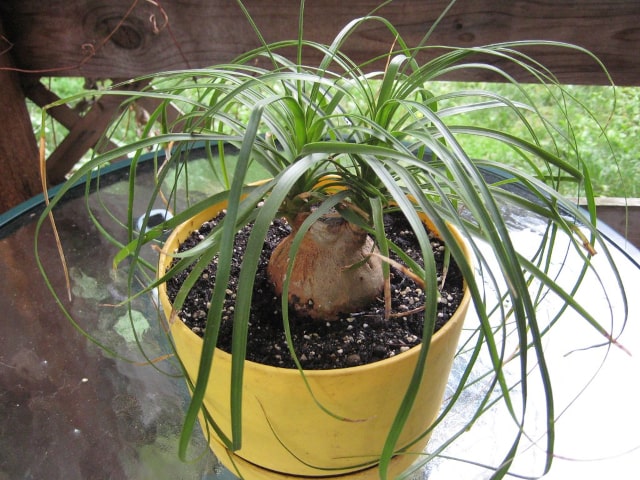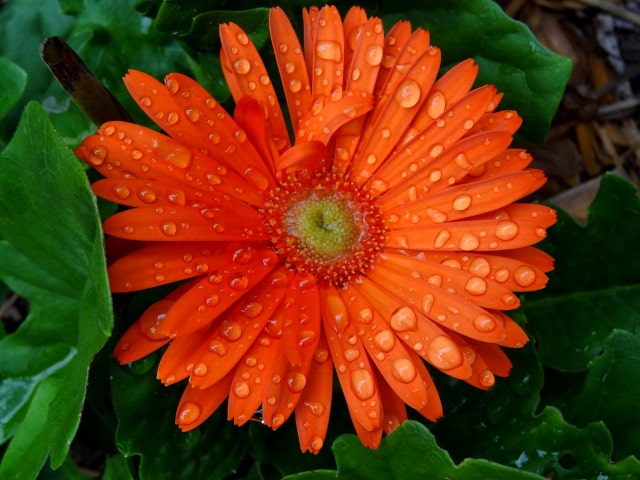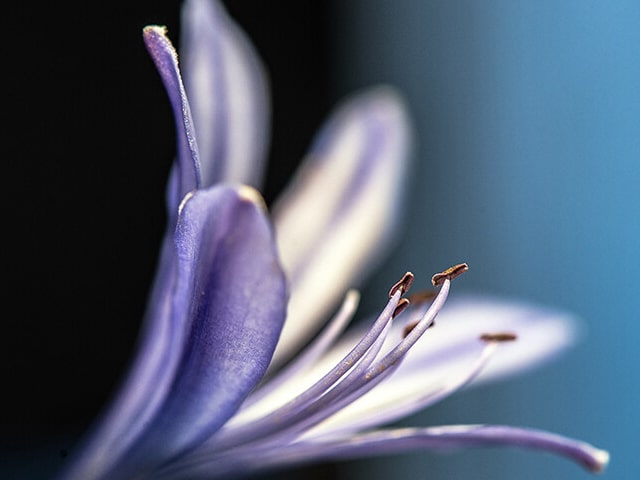
The "Ponytail Palm tree" is an interesting plant many people like to grow in their homes. This plant is not a palm at all: it's a member of the Lilaceae (lily family). It's known under several names so it's not surprising that there is a slight confusion about this beautiful plant.
For example, it's known as the "elephant's foot" due to its bulbous base. Similarly, it's also called "a bottle palm" because of this base and thin trunk.
The Ponytail Palm tree is native to Mexican deserts. This natural habitat allows them to survive in dry climate. For example, it means it's well-adjusted to interior winter heat.
This plant looks great in any garden and many home owners choose to grow it in their yard. Some people even choose to grow it indoors.
As a container plant, it can be kept in containers about 14 inches or larger. If you wish to make it appear more bush-like you should plant several 6 to 10 inch pots. A single Ponytail Palm tree can grow to about 6 to 18 feet in height, depending on where it's planted.
Ponytail plant is unique in its appearance because of the large base and a head full of smooth-edged, flat leaves. With these plants, there are no two specimen alike - each one is unique in its appearance.
Development
This plant is popular for both its foliage and interesting trunk. When it's young, the plant has almost no trunk. At this stage, the trunk resembles an enlarged onion bulb with leaves emerging on the top.
As the plant matures the trunk becomes thicker until it resembles a bottle or an elephant's foot. After a few more years the plant will probably develop several branches towards the top.
Remember: if you grow Ponytail Palms outdoors, they can reach a height to 16-18 feet, maybe even more.
When grown outdoors, a Ponytail Palm will produce flower stalks. They consist of clusters of small beige blossoms.
Care Tips
What you need to keep in mind is that this plant stores water in its base. This is why you should never let water sit in the bottom of the saucer or pot. There is always a risk of root rot. To minimize it, it's best to use a sandy mix soil. Don't use the peaty mixes commonly used for tropical plants.
It's important to allow the soil to dry out between waterings. If you're in doubt, skip the watering and wait till the next week.
On the other hand, it's possible to underwater your Ponytail plant. A clear sign of underwatering are dry, brown leaves or a shriveled stem and desiccated roots.
When it comes to light, it's important to give your Ponytail plant bright indirect sun or even full sun. If you keep it indoors, you can place it near north window and it will survive. However, in order to thrive a Ponytail plant needs full sun.
Ponytail plants don't have many pests. It can attract mealybugs, spider mites and scale on occasion, but these situations are not common.
Photo credit: madaise




2 Comments
Hello,
Great information on this plan. I bought the plant because it was beautiful but it didn't come with any information or instructions. This site is heaven sent. However, I am concerned about an issue. When I purchased the plants there were three of them, one mature larger one and two younger ones in on pot. I separated them to allow better growth. They appear to be doing well except the mature larger one. It has white drops all over the top. At first I thought it was from watering but the younger don't have that and they are watered the same way. I thought it might be a fungus but not sure. Any thoughts?
I've read a lot about ponytail palms, but I still can't decide what to do. Left for me in NJ when my parents moved to Florida, this 5 inch high plant, that I considered ugly at the time) sat in a room and was neglected. I didn't care for that kind of plant. It didn't grow; it didn't die.
A few summers ago I put it outside where it got several hours of direct sun. Suddenly it took off, getting larger- taller. The plant is about 25 years old, When it was inside I was constantly stripping off the lower browning "leaves" (fronds?) The trunk is now tall and thin. A few weeks ago I put the plant outdoors again after repotting it. I probably used the wrong kind of soil (miracle grow soil) and put it outdoors.
Unfortunately, I realized that I put it outside too soon. The evening temp went down into the high 30's! Realizing it was too soon, I brought it right back into the house. While outside for just a day or two, the new top growth turned very pale green. It's not soft or wilted-just very light. I'm now waiting for the consistently warm summer months, but the tree is right in front of the sliding doors and getting no sun. It's heavy to keep moving around, and eventually it's going outside anyway. I just forgot that I put it out in the summer in the past couple of years, not the spring!
I don't want to lose this plant. My mother passed away almost a year ago. Because the plant lived on, despite neglect all these years, it now has sentimental value to me (after first getting it from her, wondering why she just didn't take the damn plant with her when she moved).
Please help me keep the memories alive!
Should I replant it again in more beneficial soil?
When can I put it back outside (in part shade) where it flourished for the last two summers? I've heard that it's better after Mother's Day. Next week it looks like the days are going to warm up into the mid 70s or higher.
Is there hope for it? I'd like to send you a picture but don't know how to do it here.
Any thoughts and guidance would be greatly appreciated. I'd even appreciate it if you can contact me personally by email.
Thank you!